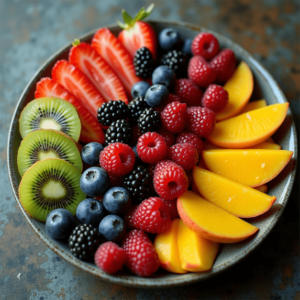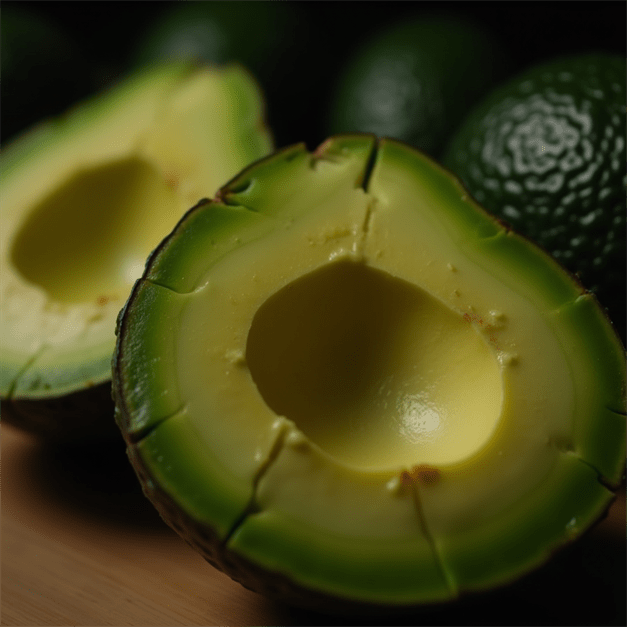Fat Burning Foods That Actually Work (No Magic Pills Required)
Last week, a client asked me if there was a “magic pill” that could help her lose weight faster. I nearly snorted my coffee through my nose because honey, if there was a magic pill, do you think I’d have spent three decades as a nurse watching people struggle with their health? What we can rely on are fat burning foods.
The truth is, your body’s been burning fat for survival for millions of years—it just needs the right fuel. These fat burning foods work with your hormones instead of fighting against them, which is more than I can say for most diet advice floating around the internet these days.
Here’s what nobody tells you about sustainable weight loss: it’s not about eating less, it’s about eating smarter. Your body has intricate systems designed to keep you alive and thriving, but our modern approach to dieting basically amounts to yelling at those systems until they shut down.

Why Most “Fat Burning” Advice is Complete Garbage
You know what I learned during my nursing career that changed everything about how I think about metabolism? Your hunger hormones are basically running software from the Stone Age. Ghrelin, the hormone that screams “FEED ME NOW,” doesn’t understand that you live in 2025 with a fully stocked refrigerator and a DoorDash app.
When you restrict calories dramatically or skip meals, ghrelin goes into full panic mode like Paul Revere riding through town yelling “The famine is coming!” Then there’s leptin, the hormone that’s supposed to tell you when you’re satisfied, but it starts acting like a moody teenager when you’ve been yo-yo dieting.
I remember Sarah, a teacher from Mill Valley, who came to me after losing and regaining the same 25 pounds four times in two years. She was convinced she had “no willpower,” but her hormones were basically staging a revolt every time she tried to white-knuckle her way through another restrictive diet.
The “eat less, move more” advice that gets thrown around like confetti at a New Year’s party? It’s about as helpful as telling someone with depression to just “think positive thoughts.” Your metabolism is more complex than a NASA mission, and it deserves better than bumper sticker wisdom.
When Sarah stopped fighting her biology and started working with it—eating regular meals with enough protein and fat to satisfy those hormonal signals—her weight stabilized naturally. No drama, no white-knuckling, no 3 a.m. pantry raids.
That’s the real secret sauce: working with your body’s natural fat-burning mechanisms instead of trying to outsmart millions of years of evolution with the latest Pinterest diet hack.
The 7 Foods That Tell Your Body to Burn Fat
Now, before we dive into this list, let me set your expectations straight. These foods aren’t magic bullets that will melt fat while you sleep—anyone selling you that story is also trying to sell you a bridge in Brooklyn.
What these foods do is support your body’s natural thermogenesis—the process where your body burns calories to digest, absorb, and process what you eat. Think of it like stoking a fire: some foods require more energy to process than others, which means your metabolism stays more active throughout the day.
The beautiful thing about these fat burning foods is that they work with your hunger hormones instead of against them, keeping you satisfied while supporting healthy metabolic function.
1. Lean Protein (Greek Yogurt, Chicken, Fish)
Your muscles are like teenagers at a growth spurt—they’re constantly hungry for protein, and they’ll throw a metabolic tantrum if they don’t get enough. This isn’t just gym-bro science; protein has the highest thermic effect of all macronutrients, meaning your body burns about 20-30% of protein calories just processing them.
I had a client, Maria, who was hitting that dreaded 3 p.m. energy crash every single day and compensating with whatever sugary snack was closest. When she started adding 25-30 grams of protein to each meal, those afternoon crashes disappeared faster than free donuts in a break room.
Here’s what happens in your body: protein requires significant energy to break down into amino acids, transport them to your muscles, and rebuild muscle tissue. This process, called protein synthesis, is like having a metabolic furnace running in the background all day long.
The practical magic happens when you consistently eat enough protein—your body maintains muscle mass (which burns calories even at rest), you stay satisfied longer, and your blood sugar stays stable instead of riding the roller coaster that leads to cravings.

2. Chili Peppers (Capsaicin)
My grandmother always said spicy food would burn your tongue, but it turns out it burns calories too. The compound that makes peppers hot—capsaicin—has been shown to temporarily boost your metabolic rate by up to 25% for several hours after eating.
Now, before you start dumping hot sauce on everything like it’s a weight loss potion, let’s keep this in perspective. We’re talking about burning an extra 50-100 calories, not torching a whole pizza’s worth of damage.
The real benefit of capsaicin isn’t just the temporary metabolic boost—it also helps regulate appetite and may improve insulin sensitivity. I started adding a pinch of cayenne to my morning eggs after reading the research, and I noticed I stayed satisfied longer without even thinking about it.
The science is pretty straightforward: capsaicin activates certain receptors that increase heat production in your body, which requires energy. It’s like turning up your internal thermostat slightly, and your body has to work a little harder to maintain that temperature.
3. Green Tea
Let me tell you about my relationship with caffeine—it used to be more complicated than a soap opera plot. I was downing multiple cups of coffee a day, riding the caffeine roller coaster of energy spikes followed by crashes that left me reaching for whatever sugary nonsense was nearby.
Green tea changed that game completely. The combination of caffeine and compounds called catechins (especially EGCG) provides a gentler, more sustained energy boost while supporting fat oxidation—the process where your body actually uses stored fat for fuel.
Multiple studies show that green tea can increase fat burning by 10-17%, particularly during exercise. But here’s what I love most about it: unlike coffee, which can spike cortisol and mess with your hunger hormones, green tea tends to keep things steady.
I switched to 2-3 cups of green tea daily instead of my usual coffee marathon, and the difference in my energy levels throughout the day was like night and day. No more afternoon crashes, no more feeling like I needed a nap after lunch.

4. Whole Grains (Oats, Quinoa, Brown Rice)
Carbs aren’t the enemy, despite what the internet’s diet police want you to believe. Your brain runs on glucose, your muscles need glycogen, and trying to eliminate carbs entirely is like trying to run your car without gas—eventually, something’s going to break down.
The difference is choosing carbs that work with your metabolism instead of against it. Whole grains require significantly more energy to digest than their processed cousins, thanks to their fiber content. This is called the thermic effect of food, and it’s like getting a metabolic bonus for making smarter choices.
I remember Janet, a busy mom who was convinced carbs were making her gain weight. When she switched from white bread and instant oatmeal to steel-cut oats and quinoa, she started losing weight without changing anything else about her diet. The fiber kept her satisfied longer, her blood sugar stayed stable, and her body had to work harder to process the food.
Here’s the beautiful thing about fiber-rich whole grains: they feed the beneficial bacteria in your gut, which produce short-chain fatty acids that support healthy metabolism. It’s like having a team of tiny workers in your digestive system helping you burn calories more efficiently.
5. Fatty Fish (Salmon, Mackerel, Sardines)
Your body can’t burn fat efficiently when it’s constantly fighting inflammation, and that’s where omega-3 fatty acids come in like the metabolic cavalry. Chronic low-grade inflammation—the kind caused by stress, poor sleep, and processed foods—basically tells your body to store fat instead of burning it.
During my nursing days, I saw this pattern constantly: patients with higher levels of inflammation markers almost always struggled more with weight management. It wasn’t about willpower; their bodies were stuck in survival mode, hoarding energy instead of using it efficiently.
Fatty fish like salmon, mackerel, and sardines are packed with EPA and DHA, the omega-3s that help reduce inflammation and support healthy insulin sensitivity. When your cells respond properly to insulin, your body is more likely to use glucose for energy instead of storing it as fat.
I aim for 2-3 servings of fatty fish per week, and I can actually feel the difference in my energy levels and how my body responds to meals. It’s like the difference between a car running on premium gas versus the cheap stuff—everything just works better.

6. Berries (Blueberries, Raspberries, Strawberries)
Nature’s candy that doesn’t come with a side of guilt—now that’s my kind of dessert. Berries are packed with compounds called anthocyanins, which give them their beautiful colors and happen to support healthy insulin sensitivity.
When your cells respond well to insulin, your body is more efficient at using glucose for energy instead of storing it as fat. It’s like having a well-tuned engine that burns fuel cleanly instead of leaving deposits everywhere.
I started my morning berry ritual about three years ago—a handful of whatever berries are in season mixed into my Greek yogurt. Not only does it satisfy my sweet tooth without sending my blood sugar on a roller coaster ride, but the fiber keeps me satisfied until lunch without thinking about snacking.
The research on berries and metabolism is pretty impressive: studies show that people who eat berries regularly tend to have better insulin sensitivity and lower inflammation markers. Plus, they’re one of the few foods that taste like dessert but actually support your health goals instead of sabotaging them.
7. Nuts and Seeds (Almonds, Walnuts, Chia Seeds)
Here’s something that blew my mind when I first learned it: high-calorie foods that actually help you lose weight. Sounds counterintuitive, right? But nuts and seeds are living proof that calories aren’t created equal.
The combination of healthy fats, protein, and fiber in nuts triggers satiety hormones that tell your brain “we’re good here, no need to keep eating.” I had a client, Rebecca, who was constantly snacking in the afternoons until she started keeping a small container of almonds at her desk. Twenty almonds around 2 p.m., and suddenly she wasn’t raiding the office candy bowl by 4.
The science behind this is fascinating: your body doesn’t absorb all the calories from whole nuts because they’re so nutrient-dense and fiber-rich. Studies show that people absorb about 20% fewer calories from almonds than what’s listed on the nutrition label.
The key is portion awareness without obsessing. A small handful (about 1 ounce) provides sustained energy, supports hormone production, and keeps you satisfied without triggering the “I’ll start fresh tomorrow” mentality that comes with restrictive eating.

The Truth About “Fat Burning Foods” (Reality Check Section)
Let me burst some bubbles here because I care about you more than I care about selling you a fantasy. These foods help support your metabolism, but they’re not going to melt fat off your body while you binge-watch Netflix and eat ice cream.
The honest truth? Sustainable fat loss happens when you consistently eat in a way that supports your hormone health, keeps you satisfied, and provides the nutrients your body needs to function optimally. There’s no food so magical that it can overcome a pattern of eating that fights against your biology.
I spent years chasing the next “miracle food” or supplement that would finally solve my weight struggles. Acai berries, green coffee bean extract, raspberry ketones—I tried them all with the enthusiasm of someone buying lottery tickets. What actually worked was learning to work with my hunger hormones instead of against them.
Your body’s been managing energy storage and release for millions of years. It knows what it’s doing if you give it consistent, quality fuel and stop trying to outsmart it with the latest internet diet hack. These fat burning foods work because they support those natural processes, not because they override them.
How to Actually Use These Foods (Without Going Crazy)
The beauty of these foods is that they don’t require a complete life overhaul or a PhD in nutrition to implement. Start with one or two that appeal to you most and build from there—Rome wasn’t built in a day, and sustainable eating habits aren’t either.
For breakfast, try Greek yogurt with berries and a sprinkle of nuts. It hits protein, healthy fats, and fiber while tasting like something you’d actually want to eat. For lunch, aim for a palm-sized portion of protein (like salmon or chicken) with some quinoa and vegetables sautéed with a touch of chili pepper.
Dinner can be as simple as fish with roasted vegetables and a side of brown rice. Snacks? A small handful of nuts, some green tea in the afternoon, or berries when you’re craving something sweet.
The key is consistency over perfection. You don’t need to eat all seven of these foods every single day—that’s a recipe for food obsession, not health. Choose what fits your lifestyle, your budget, and your taste preferences. Your body will thank you for the upgrade, even if it’s gradual.
Shopping tip: Frozen berries and fish are just as nutritious as fresh but often more budget-friendly. Canned salmon and sardines are portable protein powerhouses. Steel-cut oats bought in bulk cost pennies per serving but provide sustained energy for hours.
What Not to Expect (Managing Expectations)
Don’t expect to see dramatic changes overnight—that’s not how biology works, despite what transformation photos on social media might suggest. Real metabolic changes happen gradually as your body adjusts to consistent, quality nutrition.
You might notice increased energy levels within a week or two, better appetite regulation within a month, and gradual body composition changes over several months. Everyone’s timeline is different based on their starting point, stress levels, sleep quality, and genetic factors.
Warning signs to watch for: if you find yourself obsessing over eating these foods “perfectly” or feeling guilty when you don’t, pump the brakes. The goal is to support your health, not create another source of stress in your life.
If you have underlying health conditions, take medications, or have a history of disordered eating, work with a healthcare provider who understands nutrition. These foods are generally safe for most people, but individual circumstances matter.
Through Thick and Thin
Remember that client I mentioned at the beginning who was looking for a magic pill? Six months later, she’s down 30 pounds and has more energy than she’s had in years. Her secret weapon wasn’t a supplement—it was learning to eat foods that work with her body instead of against it.
These seven fat burning foods aren’t magic, but they’re pretty close when you understand how they support your body’s natural metabolism. Start with one food that appeals to you most—maybe it’s adding berries to your morning routine or swapping your afternoon coffee for green tea.
Your body’s been waiting for you to work with it instead of against it. These foods are simply tools to help you do exactly that, one meal at a time.
If you want to learn more about managing cravings, hunger and finally getting back to eating right for your body, pick up The Hunger Management Alternative at Amazon.com.





























